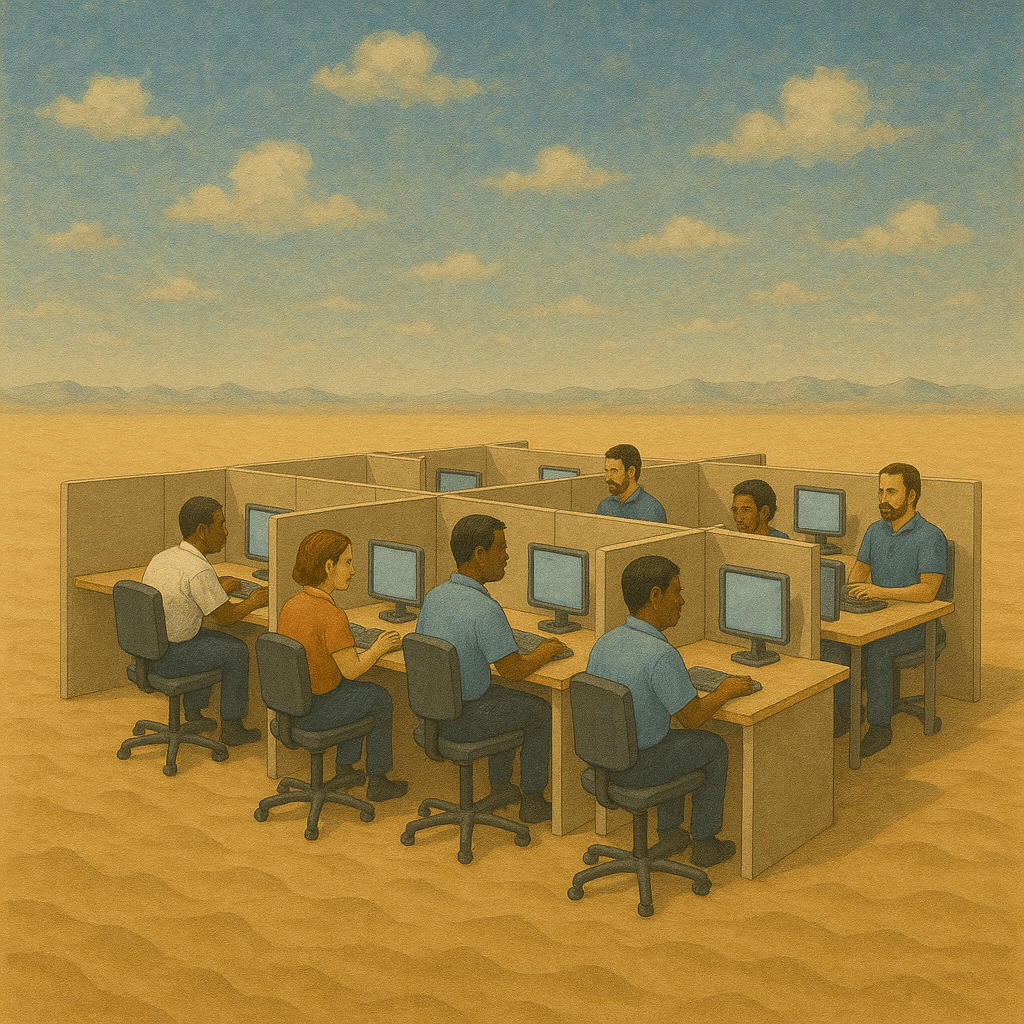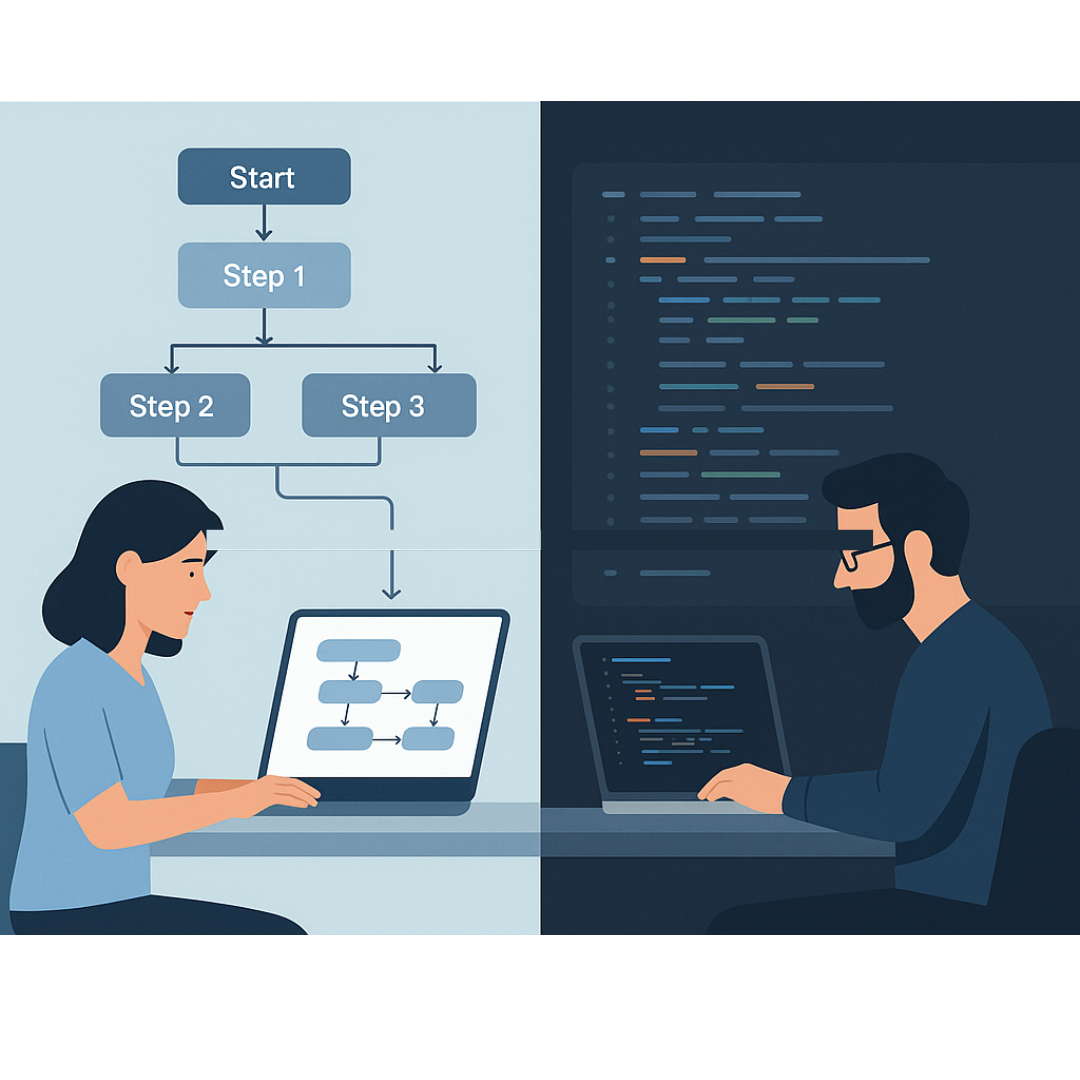TL;DR
- DS Approach: We keep core engineering close to the problem, augment selectively with near-shore partners, and guarantee outcomes instead of bill-rate illusions.
- Past: Offshore promised “same work for less,” but hidden costs—communication, context, rework—quickly surfaced.
- Present: Global teams can work, yet only with tight ownership, robust architecture, and constant collaboration—often wiping out the supposed savings.
- Future: AI is accelerating delivery, but it magnifies quality gaps and multiplies liabilities when context is missing.
The Mirage of Cheap Labor
When offshore development first hit the scene, the pitch was irresistible: Why pay local rates when a global market can deliver the same code for pennies on the dollar? Budgets shifted, projects shipped overseas, and spreadsheets predicted double-digit savings.
Reality quickly intervened. The work didn’t disappear; it transformed—into a complex coordination exercise that most teams underestimated.
Hidden Costs That Outweigh the Savings
| Hidden Cost | Why It Hurts | Typical Impact |
| Context Gap | Offshore engineers rarely sit with end-users or business stakeholders. Nuances get lost. | Requirements churn, re-work, misaligned features. |
| Communication Overhead | Time-zone lag, language barriers, and cultural idioms turn every change into a relay race. | 20-30 % of project time becomes “explaining the project.” |
| Quality Debt | Quick fixes ship; architectural rigor lags. Cheap code today becomes expensive liability tomorrow. | Escalating maintenance budgets, slower future releases. |
| Fragmented Ownership | “Throw-it-over-the-wall” hand-offs encourage finger-pointing instead of accountability. | Blurred responsibility, delayed root-cause analysis. |
| Surprise Costs | Travel, overlapping meetings, re-writes, knowledge transfer, turnover replacement. | Total cost frequently exceeds an on-shore team by launch. |
(From dozens of rescue projects we’ve inherited, these five factors show up every time.)
The Collaboration Paradox
Writing code is only a fraction of engineering value—architecting, integrating, validating, and iterating with users drive the real ROI. Those activities demand:
- Continuous feedback loops.
- Shared mental models.
- Rapid decision cycles.
Stretch them across 10 ½ time zones and you trade “savings” for latency. Teams work harder just to stay aligned; senior architects back-home tighten the bolts—at U.S. rates.
AI Won’t Magically Fix It
Generative tools crank out boilerplate faster than ever, but they also introduce compound risk:
- More Code, Less Cohesion – AI can’t intuit domain context; it drafts plausible snippets that senior devs must sift, refactor, and harden.
- Architecture Drift – Without tight on-shore stewardship, AI-generated services evolve into a noisy orchestra with no conductor.
- Liability at Scale – Speed multiplies liabilities; the bill comes due in integration, security, and compliance testing.
Offshoring piles these challenges on top of the existing coordination gap.
A Smarter Alternative: Proximity + Precision
At Digital Scientists we anchor product, architecture, and core engineering close to the problem—inside the same time zone, often in the same room—so context never leaks. When scale demands it, we augment with vetted near-shore specialists who share our tools, ceremonies, and design standards.
What you gain
- One-team culture and real-time decisions.
- Predictable velocity and transparent burn-up metrics.
- Quality baked in, not inspected later.
- Total cost of ownership you can defend to the CFO—because it includes tomorrow’s maintenance, not just today’s sprint.
Key Takeaways for Product Leaders
You no longer need to build around IAP just to test your product.
- Cheap rates ≠ cheap projects. Optimize for outcome-per-dollar, not hours-per-dollar.
- Context is currency. Protect it by keeping architects and senior engineers embedded with stakeholders.
- Accountability travels poorly. Own critical paths in-house; outsource commodities, not core competency.
- Plan for the long tail. Your software will live longer than its initial budget—invest where future you won’t pay the interest.
Offshore development isn’t inherently “bad,” but the bargain only works when you treat it as a supplement to a strong local core—not a substitute. At Digital Scientists, we choose proximity, precision, and partnership over penny-wise shortcuts—because, in software, the most expensive code is the code you have to fix later.
Ready to Build Smarter?
If you’re tired of chasing “savings” that come with strings attached, let’s talk. At Digital Scientists, we partner with product teams who value clarity, quality, and accountability—without the offshore tradeoffs. Whether you’re modernizing a legacy platform or launching something new, we bring the right mix of local expertise and scalable support to help you deliver confidently.
Get in touch for a free consultation—and discover how we turn smart strategy into sustainable outcomes.



